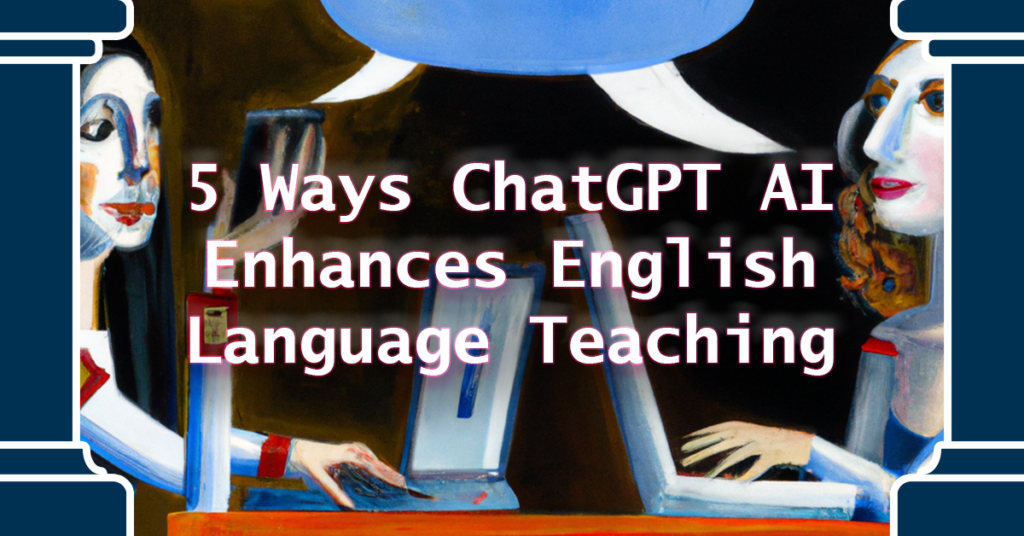English language teachers are constantly searching for innovative and engaging ways to support their students in the language learning process. With the advent of technology and artificial intelligence, there is a new tool that teachers can use to make language learning fun, effective and interactive. This tool is ChatGPT.
What is ChatGPT?
ChatGPT is a state-of-the-art language model developed by OpenAI. It is a deep learning model trained on a massive amount of text data from the internet, allowing it to generate human-like responses to text inputs.

At its core, ChatGPT is a transformer-based neural network architecture that uses attention mechanisms to better understand the relationships between words in a sentence and generate coherent and contextually appropriate responses. This makes it possible for ChatGPT to perform a wide range of natural language processing tasks, such as text generation, question answering, and dialogue generation.
One of the key strengths of ChatGPT is its ability to generate human-like responses to a wide range of text inputs. This makes it an ideal tool for language learning, as it allows students to practice using the language in a conversational setting and receive feedback from a language model that has been trained on a large corpus of natural language data.
Supporting Best Practices of Second Language Acquisition
Theories and best practices of second language acquisition suggest that language learning is most effective when it is authentic, interactive and personal. ChatGPT can help English language teachers achieve these goals in several ways:

1. Authentic Practice
ChatGPT provides students with authentic English practice through natural language conversations. Research has shown that authentic language use is critical for language acquisition (Swain, 1995).
2. Interactive and Personalized
ChatGPT can be used to create personalized and interactive language learning experiences for students. By having one-on-one conversations with ChatGPT, students can receive instant feedback and personalized language practice that is tailored to their specific needs (Ellis, 2003).
3. Vocabulary Building
ChatGPT can assist English language teachers in vocabulary building activities. By providing definitions, synonyms, and examples of new words, ChatGPT can help students expand their vocabulary in a fun and interactive way (Schmitt & Meara, 1997).
4. Grammar Practice
ChatGPT can also be used to practice grammar. By asking questions and engaging in conversations with ChatGPT, students can practice using proper grammar structures in a low-stakes environment (Lightbown & Spada, 2006).
5. Pronunciation
ChatGPT can provide pronunciation practice for English language learners. This can be particularly helpful for students who struggle with pronunciation, as they can receive instant feedback and practice pronunciation in a conversational setting (Braidi, 2011).
Currently ChatGPT doesn’t have built-in speech recognition, but this development will be coming in the very near future.

Real-World Applications
So, how exactly can ChatGPT be used in an English language classroom? Here are some real-world examples:
Vocabulary Practice


Grammar Exercises


Conversation Practice

Conclusion
ChatGPT has the potential to be a valuable tool for English language teachers, as it supports best practices of second language acquisition and provides students with an engaging, interactive and personalized language learning experience. However, it’s important to note that ChatGPT should be used as a complement to, not a replacement for, traditional language teaching methods and a teacher’s guidance.

References
- Swain, M. (1995). Three functions of output in second language learning. In Gass & Mackey (Eds.), Input in second language acquisition (pp. 125-144). Mahwah, NJ: Lawrence Erlbaum Associates.
- Ellis, R. (1994). The study of second language acquisition. Oxford: Oxford University Press.
- Schmitt, N., & Meara, P. (1997). The vocabulary levels test. London: SOAS.
- Lightbown, P. M., & Spada, N. (1999). How languages are learned (2nd ed.). Oxford: Oxford University Press.
- Braidi, S. (2011). Metalinguistic awareness and second language learning. Language Awareness, 20(1), 37-49.
AI Images generated with DALL-E by OpenAI
Thank you for reading about ChatGPT AI for English Language Teaching. Please share this article with your learning and teaching networks.
Book a Consultation: https://www.icarus.so/contact
Follow us on Twitter: https://www.twitter.com/IcarusLS
Follow us on LinkedIn: https://www.linkedin.com/company/icaruslearning

